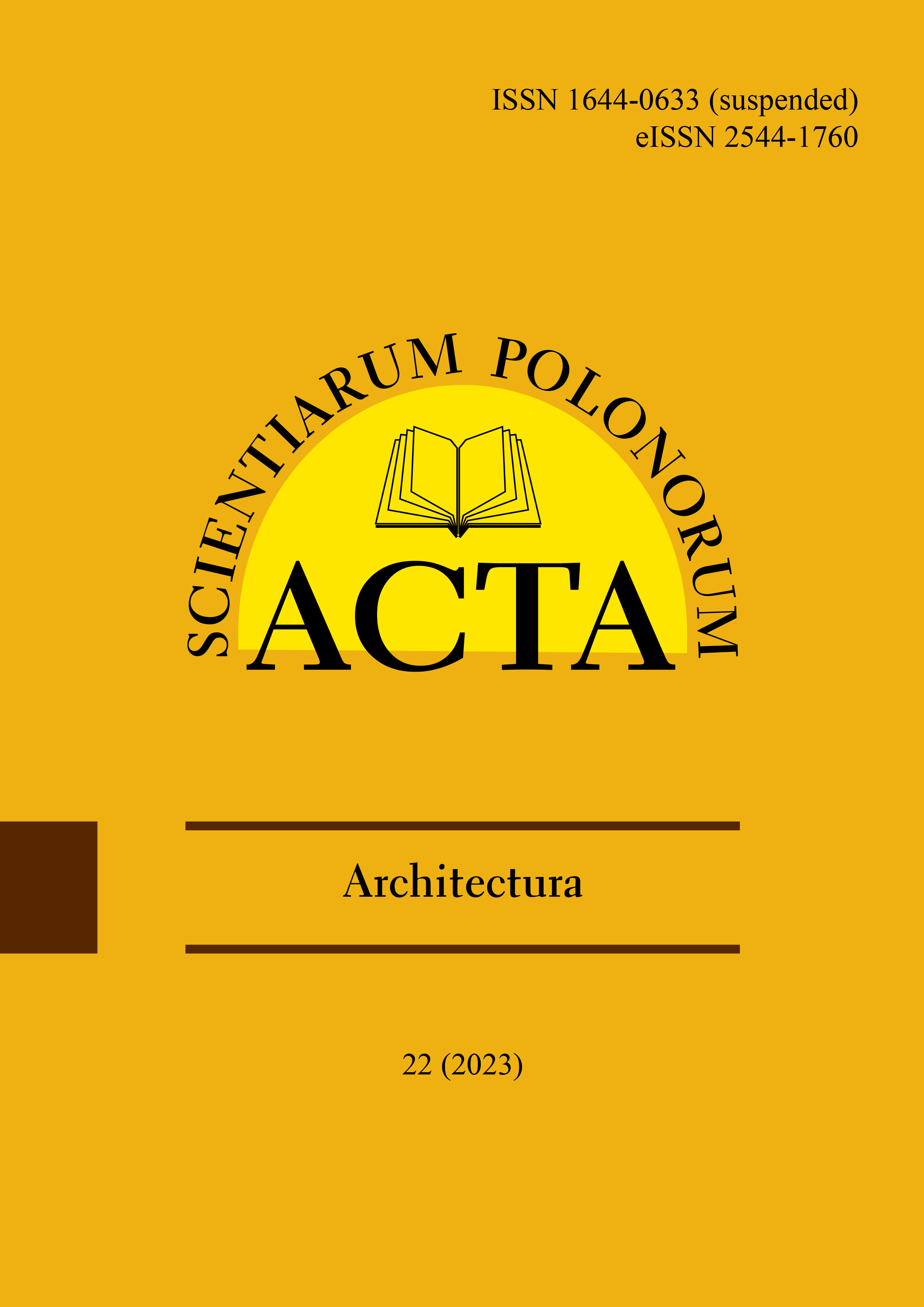Main Article Content
With large areas of water reservoirs and lakes, the wave runoff distance is also large, resulting in the high waves in the wind blow direction. These waves intensively disrupt the coast of the lake or water reservoir. Another intense factor of coastal erosion is ice. A lot of engineering measures for the coastal protection of reservoirs and especially for lakes are used: reinforced concrete slabs, blocks, jibs, cellular systems (geosynthetics), etc. An eroded coastline, reshaped by installing a coastal protection structure using gabion construction, is analysed in this research. Gabions are designed to protect banks and slopes from fast water flow (water speed over 5 m·s–1) and ice impacts. They are designed according to geotechnical principles, assessing stability according to the limit design situations specified in Eurocode 7 (EN 1997-1). The aim of this work is to illustrate the features of wave and ice loads and geotechnical design situations evaluated in the design of a coastal protection structure made of gabions.
Article Details
Chanson, H. (2015). Embankment overtopping protection systems. Acta Geotechnica, 10, 305–318. https://doi.org/10.1007/s11440-014-0362-8 (Crossref)
Cherkasova, L. (2019). Application of gabions for strengthening marine coastal slopes. Journal of Physics: Conference Series, 1425. https://doi.org/10.1088/1742-6596/1425/1/012206 (Crossref)
Chunjiang, L., Zhijun, L., Yu, Y., Qingkai, W., Baosen, Z. & Yu, D. [s.a.]. Theory and Application of Ice Thermodynamics and Mechanics for Natural Sinking of Gabion Mattress on Ice. https://ssrn.com/abstract=4149366 [preprint, not reviewed].
European Union [EU], (2004). Eurocode 7: Geotechnical design. Part 1: General rules (EN 1997-1) [Authority: The European Union Per Regulation 305/2011, Directive 98/34/EC, Directive 2004/18/EC].
Fiske, J. (2014). Case Studies Highlight Marine Mattress Applications. Geosynthetics, 32.
Hämmerling, M., Walczak, N., Walczak, Z. & Zawadzki, P. (2019). Ocena stanu technicznego umocnień brzegów cieków i zbiorników na terenie miasta Poznania [Assessment of technical conditions of bank protection of watercourses and reservoirs in the city of Poznań]. Acta Scientiarum Polonorum. Formatio Circumiectus, 18 (3), 3–17. http://doi.org/10.15576/ASP.FC/2019.18.3.3 (Crossref)
Karambas, T. V. & Samaras, A. G. (2017). An Integrated Numerical Model for the Design of Coastal Protection Structures. Journal of Marine Science and Engineering, 5 (4), 50. https://doi.org/10.3390/jmse5040050 (Crossref)
Kawalec, J. J., Kwiecien, S., Pilipenko, A. & Rybak, J. (2017) Application of Crushed Concrete in Geotechnical Engineering – Selected Issues. IOP Conference Series: Earth and Environmental Science, 95 (2). https://iopscience.iop.org/article/10.1088/1755-1315/95/2/022057 (Crossref)
Kudale, M. D. & Bhalerao, A. R. (2015). Equivalent Monochromatic Wave Height for the Design of Coastal Rubblemound Structures. Aquatic Procedia, 4, 264–273. https://doi.org/10.1016/j.aqpro.2015.02.036 (Crossref)
Kudale, A. M., Kudale, M. D. & Kulkarni P. B. (2021). Roll of hydraulic modeling in predicting impact of coastal structures. International Journal of Advanced Research in Engineering and Technology (IJARET), 12 (10), 48–60. (Crossref)
Kurbanov, S., Sozaev, A., Shogenov, A. & Karshiev, A. (2021). Bioengineering systems for protection and improvement of urbanized areas of coastal and recreational zones. E3S Web Conferences, 262, 03021. https://doi.org/10.1051/e3sconf/202126203021 (Crossref)
Lietuvos Standartizacijos Departamentas (2004a). Statybos techninis reglamentas Hidrotechnikos statiniai. Pagrindinės nuostatos [Hydraulic structures. Basic provisions] (STR 2.02.06:2004). Vilnius.
Lietuvos Standartizacijos Departamentas (2004b). Statybos techninis reglamentas Hidrotechnikos statinių poveikiai ir apkrovos [Effects and loads on hydraulic structures] (STR 2.05.15:2004). Vilnius.
Lietuvos Standartizacijos Departamentas (2017). Statybos techninis reglamentas Statinių klasifikavimas [Classification of structures] (STR 1.01.03:2017). Vilnius.
Luan, Y., Li, D., Chen, H., Geng, B. & Liu, H. (2020). Review of Ecological Coast Construction Technology. International Conference on Intelligent Transportation, Big Data & Smart City (ICITBS), Vientiane, Laos, 2020, 181–186. https://doi.org/10.1109/icitbs49701.2020.00045 (Crossref)
Łabuz, T. A. (2015). Environmental Impacts – Coastal Erosion and Coastline Changes. In The BACC II Author Team, Second Assessment of Climate Change for the Baltic Sea Basin. (Part of the Regional Climate Studies, pp. 381–396). https://doi.org/10.1007/978-3-319-16006-120 (Crossref)
Möller, I. (2019) Applying Uncertain Science to Nature-Based Coastal Protection: Lessons From Shallow Wetland-Dominated Shores. Frontiers in Environmental Science. (Vol. 7:49). https://doi: 10.3389/fenvs.2019.00049 (Crossref)
Razali, M. R., Hamzah, A. F., Othman, I. K., Lee, H. L., Rosli, N. S., Azhary, W. A. H. W. M., Ahmad, A., Hamzah, S. B. & Jamal, M. H.. (2022). Potential Development of Coastal Reservoir in Malaysia. In S. Harun, I. K. Othman, M. H. Jamal (Eds) Proceedings of the 5th International Conference on Water Resources (ICWR) (Vol. 1. Lecture Notes in Civil Engineering, pp. 397–407). https://doi.org/10.1007/978-981-19-5947-9_32 (Crossref)
Różyński, G. (2020). Parameterization of erosion vulnerability at coasts with multiple bars: a case study of Baltic Sea coastal segment in Poland. Coastal Engineering, 159. https://doi.org/10.1016/j.coastaleng.2020.103723 (Crossref)
Różyński, G. & Cerkowniak, R. (2022). Resilience of Coastal Lake Barriers in Poland in Light of Geological and Bathymetric Data and Hydrodynamic Simulations. Frontiers in Marine Science. Coastal Ocean Processes, 9. https://doi.org/10.3389/fmars.2022.815405 (Crossref)
Safari Ghaleh, R., Aminoroayaie Yamini, O., Mousavi, S. H. & Kavianpour, M. R. (2021). Numerical Modeling of Failure Mechanisms in Articulated Concrete Block Mattress as a Sustainable Coastal Protection Structure. Sustainability, 13, 12794. https://doi.org/10.3390/su132212794 (Crossref)
Sherlin, P. N. S., Sundaravadivelu, R. & Saha, N. (2018). Hydrodynamic and Geotechnical Stability of Geo-Tube and Gabion Armored Embankment. OCEANS 2018 MTS/IEEE Charleston. Charleston, SC, USA, 2018, 1–8. https://doi.org/10.1109/oceans.2018.8604872 (Crossref)
Smith, A. & Houser, C. (2022). Perspectives on Great Lakes coastal management: A case study of the Point Pelee foreland, Canada. Ocean & Coastal Management, 228. https://doi.org/10.1016/j.ocecoaman.2022.106329. (Crossref)
Sukhinov, A. I., Chistyakov, A. E. & Protsenko E. A. (2021). Coastal protection structures influence on diffraction and reflection of waves simulation based on 3D wave hydrodynamics model. Journal of Physics: Conference Series, 1902. https://doi.org/10.1088/1742-6596/1902/1/012133 (Crossref)
Toprak, B., Sevim, O. & Kalkan, I. (2016). Gabion Walls And Their Use. International Journal of Advances in Mechanical and Civil Engineering, 3 (4), 56–58.
Downloads

This work is licensed under a Creative Commons Attribution-NonCommercial 4.0 International License.

